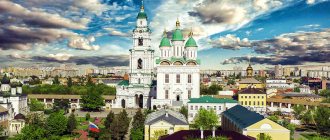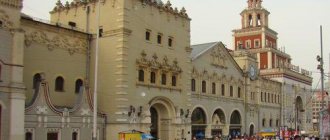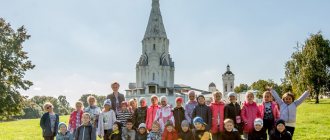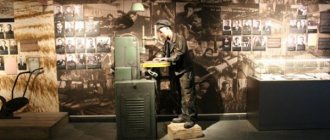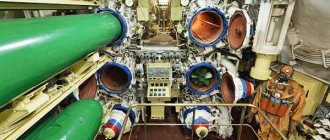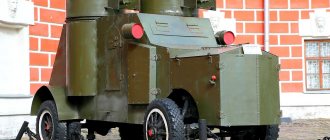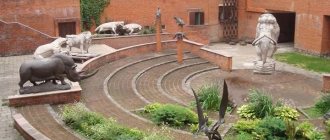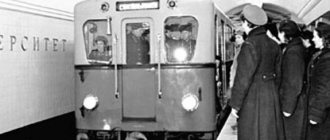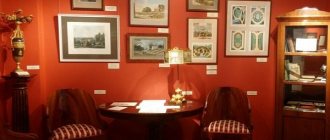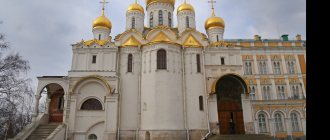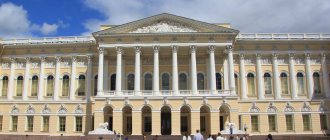On August 31 and September 1, 2021, the Military-Historical Holiday “Borodin Day” will take place in the Moscow region.
The event will take place on the Borodino field in the Mozhaisk district, 125 kilometers west of Moscow.
The main event will be a large-scale reenactment of an episode of the Battle of Borodino. The battle will be attended by lancers, hussars, dragoons, grenadiers, cuirassiers, infantrymen and artillerymen - reenactors from military history clubs.
You can watch the military-historical reconstruction for free from the natural amphitheater near the parade ground.
Borodin Day festival program
August 31, Saturday
At 13.00 and at 19.00 - Concert of the brass band of Radeberg (Germany) - more than 100 musicians in the uniform of the Saxon infantrymen of Prince Friedrich August 1810
At 14.00 - Ceremonial cancellation of anniversary postage marks
Interactive site “Military-historical bivouac of the Russian and French armies of 1812” (open from August 29 to September 1)
At 15.00 - Rehearsal of reconstruction of episodes of the Battle of Borodino at the Parade Theater near the village of Borodino
September 1, Sunday
11.30-12.00 — Ceremony at the Main Monument to the Russian Warrior Heroes of Borodin at the Raevsky Battery:
- ceremonial formation of reenactment clubs
- speeches by the guests of honor
- giving military honors
13.00-13.15 — Ceremony at the monument at Napoleon’s command post near the village of Shevardino:
- laying flowers at the monument to the "Dead of the Great Army"
14.00-15.30 - Reconstruction of episodes of the Battle of Borodino at the Parade Theater near the village of Borodino
How we go
We are Muscovites, so we are going to the holiday from the capital.
Some travel by train. Trains run to Borodino station from Belorussky Station. True, rarely - you definitely need to look at the schedule.
From Borodino station to the venue of the holiday - another three kilometers. You can walk and, if you have the strength, look along the road at the Utitsky Kurgan, the Spaso-Borodinsky Monastery and memorial signs, all of which you will see on the right and left in the field - there are many monuments to regiments, corps, artillery units and divisions.
If you're lucky, you can get there by bus. On the day of the holiday, on Sunday, buses run more often, but they still won’t take you all the way to the parade ground where the battle is taking place, because the roads directly around the museum and parade ground are blocked by traffic police on the day of the holiday. The bus will drop you off almost before reaching the Borodino Military History Museum, and from there you will have to walk about another kilometer to the clearing where the reconstruction of the battle is taking place.
There is another option - take the train not to Borodino station, but to Mozhaisk. From there there are also buses to Borodino Field, and there are more of them. In terms of time, however, it will take a little longer, but the path from the stop to the parade ground is shorter.
Someone gets to the place by their car. From Moscow you need to drive along the Minsk Highway one hundred and twenty kilometers from the Moscow Ring Road and at the 120th kilometer of the highway in the village of Artyomki turn right. Then continue along the main road all the way to the place. Those of us who, for some reason, go on Sunday morning (this is an exception), again, remember that you won’t be able to get directly to the parade ground by car - the road will be blocked, you’ll have to park before the cordon and walk.
When we go
The battle itself takes place on the first Sunday of September, but for many years we have been visiting Borodino either on Friday evening or on Saturday morning. Because on Saturday, at the parade ground (a clearing near the Kolochi River, next to which the high bank forms a natural amphitheater for spectators and where the battle is played out), a dress rehearsal for the upcoming action takes place. The same troops in uniform, the same guns, cannons, shots, the same horses, plumes, drums that will be at the performance on Sunday, and even Kutuzov and Napoleon are already at the parade, but the spectators on Saturday - nothing, no crowd, The bustle of everything is clearly visible and audible. And the participants themselves are not “performing” yet, but rehearsing, enjoying the process. In general, for us this is a real holiday.
And on Sunday we are already leaving by lunchtime, again, in time before the crowd and the main flow of departing people.
Comments (8)
Anastasia
01.09.2016 at 13:03 |
I was in Borodino last year, at the festival, I was very pleased, I really liked everything, everything was very colorful and beautiful, I would be happy to come and see it againReply
Alexandra
08/26/2019 at 15:33 |
Tell me, do I need to buy tickets or is admission free?
Reply
Tatiana (admin)
08/27/2019 at 22:29 |
Admission is free, including entrance to the parade ground. You can only pay to watch the reconstruction of the battle from the stands. From August 25, tickets for the stands can be purchased at the box office of the Borodino Field Museum-Reserve. Cost: a seat on a bench - 1000 rubles, a seat on a chair - 1500 rubles.
Reply
Sergey
09/07/2016 at 00:07 |
I was with children (a boy of 7 years old and a girl of 4.5 years old) at the Borodino reconstruction on September 4, 2021. Before that, I was here at this holiday in 1987 or 88 at the age of 12... Then there were a lot of impressions... Now also. This is a fantastic action. The people who created and support this holiday are fanatics of history and reincarnation. Excellent organization of the production. Security at the highest level. A real holiday. The service (toilets, food, etc.) is good. There's not much to complain about. The only inconvenience is that you have to leave the car 4-5 km from the scene of action (on the field) and then walk further. But it’s worth it: in a fenced space, Russian and French horse and foot soldiers march, line up, line up, prance, attack, retreat, fight, shoot... Drums beat, teams rush, huts burn, guns fire, guns crack... Delight! The guy was even given a master class on shooting from a real 19th century rifle! In short, a unique event!
Reply
Yana
08/29/2019 at 14:40 |
Please tell me whether it is allowed to bring a thermos and food with you to the Plaza Theater (we are going to go with small children, there is a need to take food with us). And what about parking? (is it far from the Parade Theater, is it paid or not? Maybe there is a map of the area to help you get your bearings)
Reply
Alevtina
08/29/2019 at 19:22 |
I support the question! Map of the area and food.
Reply
Tatiana (admin)
08/29/2019 at 09:19 pm |
Yana and Alevtina, it’s better to ask directly the administration of the Borodino Field museum-reserve about food and how far away the parking is:
telephone e-mail VKontakte group (a representative of the museum-reserve answers questions there): https://vk.com/borodino1839
Scheme for organizing traffic restrictions on the field on September 1, 2021: diagram
Reply
Vladimir
08/30/2019 at 19:42 |
Last year (and apparently in previous years too) they brought thermoses and sandwiches with them. They let us through without any problems.
Reply
Where we live
We live in tents. We quietly set up a small tent camp in the forest. Some of the regulars do the same, while others simply spend the night in the car; fortunately, the beginning of September is usually warm. You can look into the reenactors’ camps with their tents and bivouacs in the evening if you know someone who took part in the battle. Outsiders are generally not very welcome - the camps are guarded. And you won’t be able to stand next to the reenactors with your own tent, especially since the reenactors have a lot of valuable props, costumes, etc. And the horse camps are generally closed to outsiders - the horses are afraid of strangers.
If a car and tents are not your option, there are, after all, hotels in Mozhaisk, but if you are traveling with a group, with your family, and you don’t need a five-star hotel, you will somehow find the opportunity to spend the night in Borodino itself.
Clubs of historical reconstruction of Russia
Typically, the leaders of creative associations that “revive history” are people who are in one way or another connected with history (busy in the summer on excavations, and at other times in professional activities in universities). But there are many exceptions. After all, knowledge of the past (not only Russian) is now becoming fashionable. Members of the KIR gather in the premises allocated to them to make (or collect) household items or costumes authentic to “their” era. They attend historical fencing or shooting lessons (if the organization is reconstructing a complex of the New or Contemporary times). Participants in reconstruction even have the opportunity to earn money. They are able to decorate a celebration related to “their” theme with “action” or “ceremonial”. Reenactors often appear in documentaries (and today more often in feature films) dedicated to “the affairs of bygone years.” KIR unites people of all ages and professions.
Now you know what else you can devote the year 2021 to. Historical reconstruction awaits you both as a spectator and (if desired) as a participant. Leading KIRs, as a rule, have their own network resource, where the amount of the contribution, patterns of historical costumes and the collection location are indicated. There you can also get a lot of other information useful for a beginning reenactor. We would be very flattered if, after reading this review, at least one of our readers personally signs up for the historical reconstruction club. Look around and understand: it’s not too late to do this at any age.
In the comments, you can provide a link to the CIR of your city and we will collect a complete list of historical reconstruction clubs in Russia.
Historical reconstruction festival of historical reconstruction historical festival 1
What are we watching
As mentioned above, on Saturday we watch the dress rehearsal of the battle. It passes during the day. As a rule, reenactors choose one of the episodes of the Battle of Borodino, for example, the capture of the Shevardino redoubts, or the feat of the Raevsky battery, and, starting from the topic, they play out an approximate scenario of what happened in this episode of the Battle of Borodino.
During the main performance, for clarity, the action is commented on by a specialist, so that it is clear who these horsemen are in red uniforms and with high plumes, where those Cossacks are heading, why Bashkirs archers suddenly appeared on the field, what cannons are now firing, who are the rangers aiming at and whom the dragoons cut down with sabers.
The rehearsal lasts two hours. Then you can go to the museum, visit the interactive re-enactor camp organized in a clearing near the museum, or stroll around the fair. Some of the retail outlets are located at the top of the amphitheater of the parade ground, the other part is in the reenactors’ camp, and sales tents also stand along the road leading from the museum to the parade ground. The fair is interesting. There is not much consumer goods, but there is a lot of artistic and original works, handicrafts, delicious food like sbitnya, Tula gingerbread, Belyov marshmallows and pies. There are absolutely exclusive souvenirs that you definitely need to bring from Borodino - for example, tin soldiers and bullets that are cast right there in front of you.
The interactive camp at the museum is also worthy of attention. Large tents house military surgeons and blacksmiths, a field kitchen and canteens, officers and lower ranks. The life of soldiers and officers - hussars, dragoons, lancers - is demonstrated. Cossacks can organize competitions - equestrian agility exercises, for example, knocking down a bottle of water with a sword while galloping, or knocking off a jar lid with a whip. Every year the “gypsies” come - with guitars, in colorful skirts, dancing and singing - it’s a great pleasure to see and hear them.
The Saturday evening before the holiday is interesting and unpredictable. You can walk around the fires - in many places they sing, conversations on all sorts of historical topics are also interesting to listen to. You can get into rapid-fire competitions and even, if you’re lucky, hold a gun in your hands. A flintlock gun can fire three times in a minute - it takes a very long time to load it and the guns themselves are very capricious. But the reenactors are coping. The gunpowder in the guns and cannons is real—reenactors are given it in small quantities before the battle.
On Sunday mornings, around 11 o'clock (need to be clarified), there are ceremonial formations of individual reenactment military units at one or another monument. And the main reconstruction of the battle itself begins, as a rule, around two o’clock in the afternoon.
Exhibits and monuments
Still, it is necessary to list the main objects of the museum-reserve. This is the main monument to Russian soldiers and the grave of Bagration, the Spaso-Borodinsky Monastery and Bagration's flashes, the Monument to Kutuzov on the site of his command post in Gorki, the Utitsky Kurgan, a military memorial and a memorial temple in honor of those killed in 1941, the bunkers of the Mozhaisk defense line. The main exhibition “Glory forever, Borodino!” located in the Borodino Museum near the Raevsky battery. Part of the museum exhibition can be viewed in the Spaso-Borodinsky Monastery. Here, in one of the monastery buildings, where already in the twentieth century, in the military forties there was a hospital, there is an exhibition “Borodino during the Great Patriotic War”. The exhibition “Military Gallery of Borodino Field” and the exhibition “Military Art Toy” are in the building of the Temple of John the Baptist. On the territory of the museum complex there are also permanent exhibitions - “House-Museum of Mother Superior Maria” and “Heroes of the novel “War and Peace” on the Borodino Field”.
The reconstruction of the Battle of Borodino is not the only holiday that is held in the museum complex. For example, on the last weekend of May, the Military History Festival for children “The Steadfast Tin Soldier” is held here; on the last weekend of July, the Equestrian Military History Festival named after. Denis Davydov, and on the second weekend of October - the Military History Festival “Moscow is behind us. 1941."
Photos of Elena Shmyreva and Dmitry Remnev were used
INTERNATIONAL MILITARY HISTORICAL FESTIVAL “BORODIN’S DAY”
On September 1–2, 2021, on the territory of the Borodino Museum-Reserve, one of the brightest holidays for everyone who loves the history of Russia took place - the International Military History Festival “Borodino Day”, dedicated to the 206th anniversary of the Battle of Borodino. The holiday acquired a special color and historical component more than 20 years ago, when military-historical clubs and associations began to take part in it.
The celebration of military history is organized by the Ministry of Culture of the Russian Federation, the State Borodino Military Historical Museum-Reserve with the support of the Russian Military Historical Society (RVIO) and the International Military Historical Association (IMIA).
Every year on the first Sunday in September, the Russian military field invites guests from all over the world to a large-scale reconstruction of episodes of the general battle of the Patriotic War of 1812.
From August 30 to September 2, an interactive bivouac of the Russian and French armies of the Patriotic War of 1812 operated. On these days, festival guests could visit several sites: “Russian Army Camp”, “Historical Fencing”, “Russian Folk Costume”, “Bivouac of the French Army”, “Field Forge”, “Saddlemaker’s Workshop”, “Shoe Shop”, “Barber” ", "Field Surgery", "Candle Factory" and others.
Also, as part of the work of the military-historical bivouac, it was possible to attend master classes on writing letters with a real pen, making flowers from ribbons, Russian folk dolls from fabric, and try yourself in the artistic direction “Draw Borodino”.
In the historical bivouacs, spectators got acquainted with the camp life of the Russian and French armies, uniforms and equipment. You could try on uniforms from the era of the Napoleonic wars and hold in your hands weapons that fully corresponded to that heroic time.
On August 31, in the exhibition hall of the Imperial Palace in the village of Borodino, the exhibition “Leipzig was taken. The victory is complete.”, dedicated to the 205th anniversary of the Battle of the Nations near Leipzig, which took place on October 16-19, 1813. The first visitors to the exhibition were cadets from the Republic of Belarus. On September 1, a dress rehearsal for the military-historical reconstruction of episodes of the Battle of Borodino took place, where about 800 people in the uniform of the Russian and French armies took part.
As part of the festival, a ceremony was held to bury the remains of soldiers who died on the Borodino field in 1812. In a mass grave near the Kolotsky Monastery, after 206 years, the nameless soldiers were interred. The ceremony was attended by Deputy of the Moscow Regional Duma Tatyana Vladimirovna Serdyukova, Director of the State Museum of Defense and Liberation of Sevastopol Nikolai Ivanovich Musienko, Head of the regional branch of the Russian Military Historical Society for Bashkiria Ramil Nasibulovich Rakhimov, members of military-historical reconstruction clubs.
On September 2, at the monument to the “Fallen of the Great Army” in the village of Shevardino and at the Main monument on the Raevsky Battery, ceremonies were held with military honors and the laying of flowers. At the memorial ceremony at the French monument, participants of military history clubs looked impressive - French infantry, cuirassiers, carabiniers, artillerymen, lancers.
The official events were opened by the director of the State Borodino Military Historical Museum-Reserve Igor Valerievich Korneev. At the monument to Russian soldiers, the audience was addressed by: the head of the Mozhaisk urban district Ilya Igorevich Ponochevny, the representative of the French Embassy Attache for Defense, Brigadier General Mr. Ivan Martin, the scientific director of the Russian Military Historical Society Mikhail Yuryevich Myagkov, a descendant of the hero of the war of 1812, General Nikolai Nikolaevich Raevsky Sergei Petrovich Sakhnovsky-Raevsky. Also present were official representatives of the embassies of France, Germany, Serbia, Denmark, Poland, members of the State Duma, representatives of the Ministry of Culture and the Ministry of Defense of the Russian Federation. At the end of the ceremony, at the Main Monument, the dean of the churches of the Mozhaisk district, Hegumen Daniil, served a litany of remembrance for the fallen Russian soldiers.
The culmination of the holiday was a vivid military-historical reconstruction of episodes of the general battle of the Patriotic War of 1812. The action on the field was accompanied by pyrotechnic effects and excellent commentary from the announcers.
Reenactors from 80 military history clubs in Moscow and the Moscow region, Cherepovets, St. Petersburg, Perm, Ufa, Crimea, as well as countries far and near abroad took part in the bright and dynamic battle scene at the parade ground theater.
“The Battle of Borodino” ended that day with thunderous applause from the audience and beautiful verses by the Russian poet A.S. Pushkin: “We commemorated the great day of Borodin with a fraternal funeral feast, We repeated: “The tribes walked, threatening Russia with trouble; Wasn't all of Europe here? And whose star was guiding her!.. But we became a solid heel And with our breasts we accepted the pressure of the Tribes, obedient to the proud will, And the unequal dispute was equal.”
The Borodin Day festival, according to audience reviews, leaves an unforgettable impression and provides an opportunity to feel involved in the heroic history of the Fatherland.
The administration of the Borodino Museum-Reserve sincerely thanks all partners, museum employees, employees of government services and departments involved in the organization and holding of the International Military History Festival “Borodin Day”.

